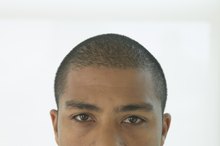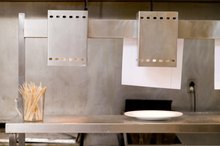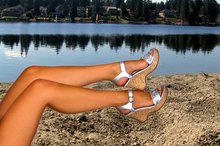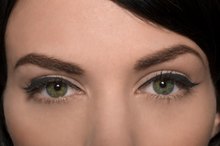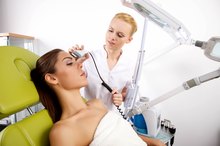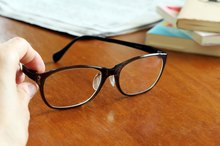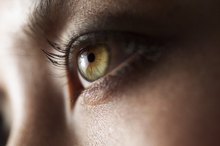Can I Use My Grow Light for Light Therapy?
Light therapy is one of the leading treatments for Seasonal Affective Disorder (SAD). Doctors sometimes also prescribe light therapy to treat sleep disorders, attention-deficit disorders, circadian rhythm disruptions and other conditions. The proper intensity and quality of light is the most important quality to consider for light therapy. Grow lights, intended for growing plants indoors, may actually be harmful to use for light therapy.
What is Light Therapy?
In order to consider whether grow lights are appropriate for light therapy, it is important to understand exactly what light therapy is. Patients sit at a prescribed distance from a box containing fluorescent bulbs for a certain period at a certain time each day. The light is on and positioned slightly above eye level to mimic the direction of sunlight. The patient must have his eyes open; light therapy does not work during sleep or with closed eyes. Patients are free to work, read, or have a meal as long as they do not move away from the light box. They must face the light box but not look directly into the light sources. Time varies for each individual, but 30 minutes a day is a common starting point, according to the Center for Environmental Therapeutics 1.
- In order to consider whether grow lights are appropriate for light therapy, it is important to understand exactly what light therapy is.
- Time varies for each individual, but 30 minutes a day is a common starting point, according to the Center for Environmental Therapeutics.
Measuring Light
Blue Light Therapy Benefits
Learn More
The intensity of a light therapy box is given in lux. Lux is an international unit of measure of light falling on an object at a certain distance. The recommended intensity for light therapy boxes is 10,000 lux. It does not matter what kind of light is used, such as:
- full-spectrum or incandescent
- as long as the intensity is sufficient
- [according to Dr
Raymond W. Lam
* Director of the Mood Disorders Center of the University of British Columbia Hospital](https://www.youtube.com/watch?v=IwneIN8icfQ).
- The intensity of a light therapy box is given in lux.
- Lux is an international unit of measure of light falling on an object at a certain distance.
Is a Grow Light Enough?
Choosing a grow light for light therapy, therefore, seems possible. However, grow lights are measured and sold according to their wattage. Therefore, it would be necessary to convert from watts to lux to find a grow light with enough intensity for light therapy. The problem is that wattage is a measure of power coming from the light, and lux is a measure of light falling on an object at a distance from the light. There are ways to convert the numbers mathematically, but the two measurements are actually measuring entirely different things. In addition, grow lights that are intense enough for light therapy are usually so hot that to sit near enough to them would cause burns on the skin.
The biggest problem in finding an appropriate grow light for light therapy is that they are designed for growing plants, not for light therapy. Lights that are not specifically designed for light therapy can harm eyes and skin because they do not filter out harmful ultraviolet (UV) rays, according to the Center for Environmental Therapeutics 1.
Ultimately, it is safer and more effective to use a light box specifically designed for light therapy than to try to substitute a grow light.
- Choosing a grow light for light therapy, therefore, seems possible.
- Therefore, it would be necessary to convert from watts to lux to find a grow light with enough intensity for light therapy.
Related Articles
References
- Center for Environmental Therapeutics
- Dr. Lam Presentation Video
- Yorguner kupeli N, Bulut N, Carkaxhiu bulut G, Kurt E, Kora K. Efficacy of bright light therapy in bipolar depression. Psychiatry Res. 2018;260:432-438. doi:10.1016/j.psychres.2017.12.020
- Geoffroy PA, Fovet T, Micoulaud-franchi J, Boudebesse C, Thomas P, Etain B, Amad A. Bright light therapy in seasonal bipolar depressions. Encephale. 2015;41(6):527-33. doi:10.1016/j.encep.2015.09.003
- Nasr S, Elmaadawi A, Patel R. Bright light therapy for bipolar depression. Current psychiatry. 2018;17:28-32.
- Oren, DA, Cubells JF, & Litsch, S. Bright light therapy for the schizoaffective disorder. Amer J of Psychiatry. 2001 Dec;158(12):2086-7.
- Pjrek, E et al. Menstrual disturbances a rare side-effect of bright-light therapy. Int J Neuropsychopharmacol. 2004 Jun;7(2):239-40.
- Sato, Toru. (1997). Seasonal affective disorder and phototherapy: A critical review. Professional Psychology: Research and Practice, 28, 164-169.
- Sit D, Wisner KL, Hanusa BH, Stull S, & Terman M. Light therapy for bipolar disorder: a case series in women. Bipolar Disord. 2007 Dec;9(8):918-27.
- Steiner, M. & Born, L. (2000). Advances in the diagnosis and treatment of premenstrual dysphoria. In: Managing depressive disorders by Katharine J. Palmer and Chung Kwai. Hong Kong: Adis International Publications, 139-57.
Writer Bio
Karren Doll Tolliver holds a Bachelor of English from Mississippi University for Women and a CELTA teaching certificate from Akcent Language School in Prague. Also a photographer, she records adventures by camera, combining photos with journals in her blogs. Her latest book, "A Travel for Taste: Germany," was published in 2015.

